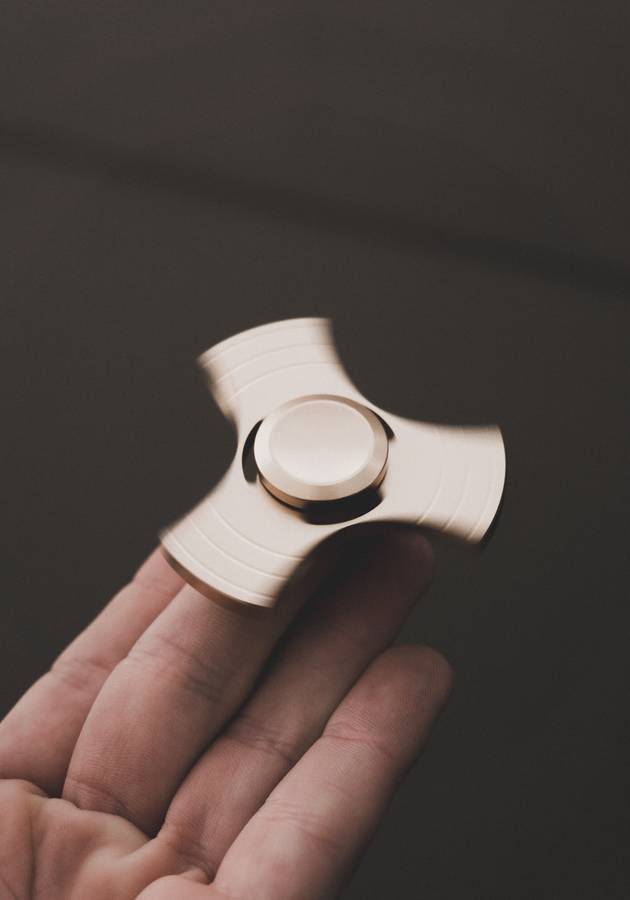A perfect night out
When she was in her mid-twenties, Pantzar’s ideal night out included cocktails with her colleagues at member-only bars and celebrity spotting at a launch or press event. SOme of the stars she met on those occasions were ‘’Sex and the City’’ star Chris Noth, ‘’Friends’’ star David Schwimmer and actress Minnie Driver. If someone had then told her that her perfect night out would soon involve jumping into icy seawater, she would have laughed out loud. However, the shift in the perception of having fun and recharging came after she decided to move to the land of her ancestors, Finland.
One of the first scenes that intrigued her after moving to Finland was three young men running toward the icy Baltic Sea to take a dip on a cold November night. Eventually, she realized that this kind of scene was captivating only to newcomers but ordinary to locals and, as she became more of a local over the years, she decided to try winter swimming herself - at least once. However, once she tried it and got to know its benefits, quick dips before or after work became an inevitable part of her daily routine.
Since her childhood, Pantzar suffered from depression and anxiety. She finally received an official diagnosis and treatment with medications and therapy in her mid-twenties. Although these eventually brought an improvement, it wasn’t until she changed her lifestyle habits and mindset that she completely recovered. Believe it or not, the daily practice of swimming in a cold sea largely contributed to that. She writes, ‘’Winter swimming has helped me tap into a deep reserve of strength and resilience I didn’t know I possessed. Gone is the insecure, tired, want-to-pull-the-covers-over-my-head version of me. Where weakness once reigned, I’ve discovered my sense of sisu, the psychological power that allows me to pull myself together even when I feel mentally and physically depleted.’’
What is sisu?
So, what is sisu, how is winter swimming connected to it and how does it contribute to happiness? These were some of the questions that intrigued Pantzar as she tapped into the power of the Nordic lifestyle. Some of the elements of that lifestyle she mentions are Nordic eating habits, using bicycles as a means of transportation, going to saunas, a DIY approach to life, and winter swimming, of course. At first, she confuses some of the lifestyle features with acts of stubbornness, eccentricity, and even thriftiness. She did not understand why wouldn’t anyone voluntarily choose an easy way out, such as driving a car to work instead of cycling or exercising in the cold after being in the office for several hours. And finally, why would anyone swim in the cold water regularly if they can do it in the indoor swimming pool or perhaps not at all? However, as her life in Finland progressed, Pantzar realized these practices were, in fact, daily acts of sisu.
When she started studying the sisu concept, Pantzar came across several definitions of it. André Noël Chaker, the author of ‘’The Finnish Miracle: 100 Years of Success,’’ defined it as “icy cold determination that makes you do the impossible.” A famous Finnish composer Jean Sibelius also used the word ‘’impossible’’ in his definition: “Sisu is like a metaphorical shot in the arm that allows the individual to do what’s impossible.” Emilia Lathi, one of the world’s foremost sisu researchers, has her own explanation of sisu as ‘’the importance of being in situations that test us and allow us to see what we’re capable of.” But, how does doing what seems impossible contribute to happiness and well-being? By cultivating sisu, hence the courageous attitude and an action mindset, we actively transform challenges into opportunities to grow. Simply speaking, sisu makes us replace ‘’I can’t’’ or ‘’I won’t’’ with a ‘’How can I’’ attitude.
More about winter swimming
Pantzar spent one of her first Valentine's Day in Finland quite unusually - standing on a dock, wearing nothing but a swimming suit and a wool toque and shivering. Riika, an enthusiastic winter swimmer Pantzar had met at a dinner party sometime before that, was beside her, giving necessary instructions. Then, she gradually lowered herself into the water before swimming a small loop, which seemed incredibly brave to Pantzar. Encouraged by Riika, she decided to try to go into the frigid water, too. As she lowered herself down the ladder so that the painfully cold water was up to her chest, she could not wait to get out and run to the sauna. Once she got out, an amazing thing happened, though - all body parts previously numbed started to tingle and the warm glow replaced the pain. She describes that it was as if she had ‘’a massage or taken a strong painkiller whose effects have just kicked in.’’ So, after a sauna, she decided to lower herself once again as she felt fantastic.
We have previously learned that winter swimming is a manifestation of sisu - if you try it, you show yourself that you can do what seemed impossible. As Pantzar clarifies, ‘’Winter swimming opens up a whole new way of thinking: If I can do this, what else can I do?’’ Nevertheless, the benefits of winter swimming are not only constrained to the changes to one’s mindset or the euphoric feeling you get after it. Cold dips are a natural remedy for many other ailments, such as tiredness, muscle tension, and insomnia. Furthermore, they have a meditative effect as they force you to be in the present moment and also alleviate the sluggish, lethargic feeling that is a common symptom of depression.
Research has shown that a 30 to 60 seconds dip in about 4 degrees Celsius cold water during the winter causes a rush of so-called happy hormones - endorphin (a natural painkiller), serotonin (responsible for maintaining mood balance), dopamine (controls the brain’s reward and pleasure centers and also helps to regulate movement and emotional response) and oxytocin (‘’love hormone’’). In addition to this, it enhances blood circulation, burns calories, and boosts the immune system. Finally, winter swimming is also about the connection with nature, meaningful especially for those who don’t have regular contact with the outdoors.
The Nordic diet
Not only did Pantzar manage to overcome depression by going winter swimming, but also by changing her eating habits. After switching to the Nordic diet, she realized how some of her earlier lifestyle choices often fueled her anxieties and depression and that eating a balanced meal can be beneficial to someone prone to these conditions. Research has confirmed her realization, too. One Finnish study found that a healthy diet can reduce the risk of severe depression. Other ones proved that ‘’junk food, sugar and processed meats were associated with elevated depressive symptoms,’’ and that ‘’a healthy diet rich in folate, and a dietary pattern rich in vegetables, fruits, berries, whole-grains, poultry, fish and low-fat cheese, may be protective against depression.’’
In essence, the Nordic diet is based on fruits, berries, vegetables (preferably seasonal and local), and oily fish. Nordic people generally eat less red meat and more fish, rye bread instead of white, low-fat dairy products, and healthy snacks such as fruit and berries, rarely cakes and pastries. They use oils low in saturated fats, such as canola or extra virgin olive oil. Of course, it is not only what they eat but when and how they eat their meals. In Finland and Scandinavia in general, people take a proper lunch break (they don’t eat their lunch over their keyboards while working) and eat their main meal in the middle of the day, and not in the evening as Americans do.
Naturally, not everyone in Finland eats healthy, and not everyone is slim. However, if someone wants to lose weight, they don’t go on strict diets but follow a simple approach to losing weight, which means eating balanced meals rich in vegetables, fruit, poultry, fish, and whole grains and, of course, increasing their physical activity. Moreover, they try to enjoy what they eat and occasionally go for a burger, fries, and a piece of cake not to feel miserable and challenged to stick to a healthy and balanced diet. So, to anyone who wants to lose weight the Finnish way, the message is simple: increase the good food rather than focusing on decreasing the bad ones.
The Nordic minimalism
After Pantzar took a short swim on an early summer morning, a colorful rug the woman was scrubbing on a dock caught her attention. When she approached and admired it, a woman proudly told her that the rug had been in her family for more than a half-century. As a child, she watched how her mother made the rug on a loom out of her family’s old clothes. The woman also told Pantzar that as time went by, she cherished the heirloom more and more - the rug became a family history she walked on every day. According to Pantzar, that rug was a perfect example of Nordic practicality - ‘’recasting something old into a new item that serves a purpose and carries a meaningful story.’’
In Finland, consumerism is almost always frowned upon. Rather than buying new things, Fins usually opt to make things themselves, try to repair the broken ones, or buy second-hand ones. When they buy new things, they choose expensive but well-made, sustainably, and ethically produced ones that will stand the test of time instead of low-quality, cheap products that quickly end up in a landfill. The minimalist approach to buying is reflected in the design, as well. You have probably heard or seen the works by a famous Finnish designer Marimekko or an architect and designer Alvar Aaalto. Aaalto’s works, for instance, perfectly illustrate the idea of simplicity, longevity, and functionality. Just consider one of his iconic creations, the Artek Stool E60, made in 1933. After several decades, it is still on the market and has multiple purposes in homes - it can be a coffee table, nightstand, bookstand, or stacked in the corner of a room to save space. Perhaps it is expensive, but by investing in it, you don’t need to keep buying new ones, and therefore, support a sustainable ethic, as well.
So, in addition to creating a functional lifestyle in areas of well-being, Fins tap into sisu and make the effort to build, organize and use their surroundings so that it is beneficial not only for individuals but our planet, too.
Final Notes
In a time when most of us have everything in abundance, and the solution to many problems is within hand’s reach, we need to take the opposite direction and try to approach life from a sisu perspective, hence, challenge ourselves to return to simplicity, nature and not always choosing the easy way out. In ‘’The Finnish Way,’’ you can learn all about how to do that and discover which aspect of sisu works best for you.
12min Tip
If you want to try winter swimming, it would be best to start preparing for it at the end of summer by continuing to swim regularly. That way, your body will gradually adjust to cold water temperatures. Needless to say, if you suffer from medical conditions, such as asthma or high blood pressure, you shouldn’t go winter swimming without consulting with your doctor first.





























